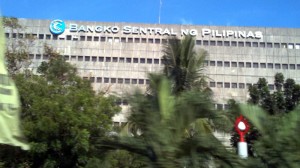MANILA, Philippines – Loss buffers of banks declined at the end of March following the implementation of stricter regulations over debt securities qualified as capital that took effect at the start of the year, regulators reported Monday.
Industry capitalization levels, however, remained well above the minimum prescribed by the Bangko Sentral ng Pilipinas (BSP)—testament to the health of the local financial sector, officials said.
Data released by the BSP showed universal and commercial banks’ average capital adequacy ratio (CAR) stood at 15.45 percent. Including the books of subsidiaries, banks’ CAR stood at 16.35 percent in March.
Both levels were lower than the solo and consolidated CARs of 16.50 percent and 17.65 percent, respectively, recorded in end-December. Monday’s report on capital was the first since the new rules took effect.
“The December 2013 ratios were calculated under the previous prudential regime,” the BSP said in a press statement, explaining the dip. Under existing regulations, banks need only maintain CAR levels of 10 percent.
Banks’ CARs, which is a measure of capital they have relative to risk-weighted assets such as loans and investments, serve as buffers for potential losses from defaults.
At the start of the year, Basel 3 regulations on capital took effect, which meant that debt securities issued by banks that qualified as a lower kind of capital that could augment their CARs under previous rules, were no longer recognized by regulators.
Basel 3 rules dictate that if banks want to continue issuing debt securities, these notes need to have loss-absorbency features to make them act more like real equity capital.
